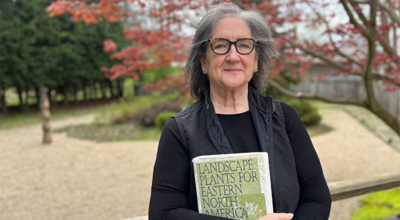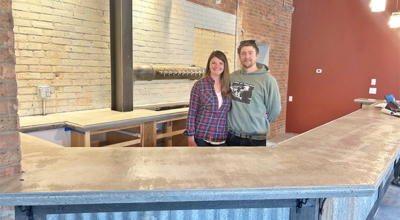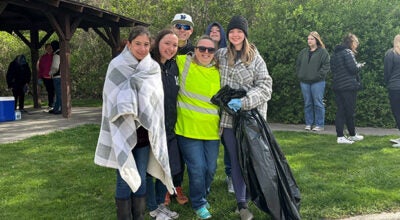Balance bottom line with nature, society
Published 7:40 pm Thursday, April 12, 2012

Mike Keen, Ph.D., who directs the IUSB Center for a Sustainable Future, wore cotton pants to Dowagiac April 12, but his nylon shirt was “made of oil. People hide plastic water bottles when I walk into a room, but I’m not about judging. I’m not ready to give up my chocolate that comes halfway around the world, but I am trying to live more sustainably. My water heats 12 to 15 minutes a day and I buy food from local farmers I know who don’t use pesticides. I eat the occasional orange. Sixty years ago, an orange was something you got as a Christmas gift. We’re in the midst of revolution changing the way we live.”
Mike Keen lives in a 1924 house with three closets and a one-car garage.
He and his wife agree that to curb clutter, for every item brought in, something is banished, leading to “simplified Saturdays,” when he gives away speakers, a blender or a leather satchel to maintain household balance.
Besides being a professor of sociology at Indiana University South Bend, Keen directs IUSB’s Center for a Sustainable Future, which brought him to Dowagiac Thursday to preach a “triple bottom line,” where profits balance with nature and society. He spoke to three civics classes, a topics class and a law class for Union High teacher Dan VandenHeede.
“Einsteins and Edisons of this century are not going to invent a new world, you’re going to reinvent in accordance with nature and principles of sustainability,” like modern efficient light bulbs. “We can’t use water or cut forests down faster than they can replenish themselves. Besides environmental concerns, there’s a social concern. We need everybody’s brains working together to get this planet back in balance. Nature is our bank account. If you draw out money without putting any in, eventually you’re bankrupt. We got here through creativity and that’s what we’ll harness to turn it around.”
Like a terrarium, Earth is a closed recycling system. Water evaporates into clouds and returns to aquifers as rain. Plants need carbon for photosynthesis, which converts carbon dioxide back into breathable oxygen.
“If we can keep this system in balance,” he said, “we can continue to survive generation after generation. Nature doesn’t throw anything away. Leaves decompose into the soil as nutrients. Animals that die in the woods get eaten.
“For nature, waste is food. We turn sun into energy we use, whether electricity, burning fossil fuels, windmills or solar panels. Since the industrial revolution human beings have been sucking fossil fuels from Earth’s crust and burning them, which increases the carbon level faster than it can regenerate itself and upsetting weather patterns. We can’t continue to increase stuff we dig out of the crust and put into our atmosphere.”
Until the 1930s, “We were largely a wind, wood, water and wool society,” Keen said. “You could re-use everything in this room. With plastics, we should recapture everything we can and develop new computers that don’t use as much of this stuff. Apple is coming to our campus May 11-12, picking up electronics for free and putting them back into the resource stream — not taking them to a dump.”
Houses since the 1950s have grown in “closets, basements and garages because we want to fill them with stuff.”
Real change takes time, such as weaning off fossil fuels, but Keen expects renewable sources to meet more than half of energy needs by 2050.






